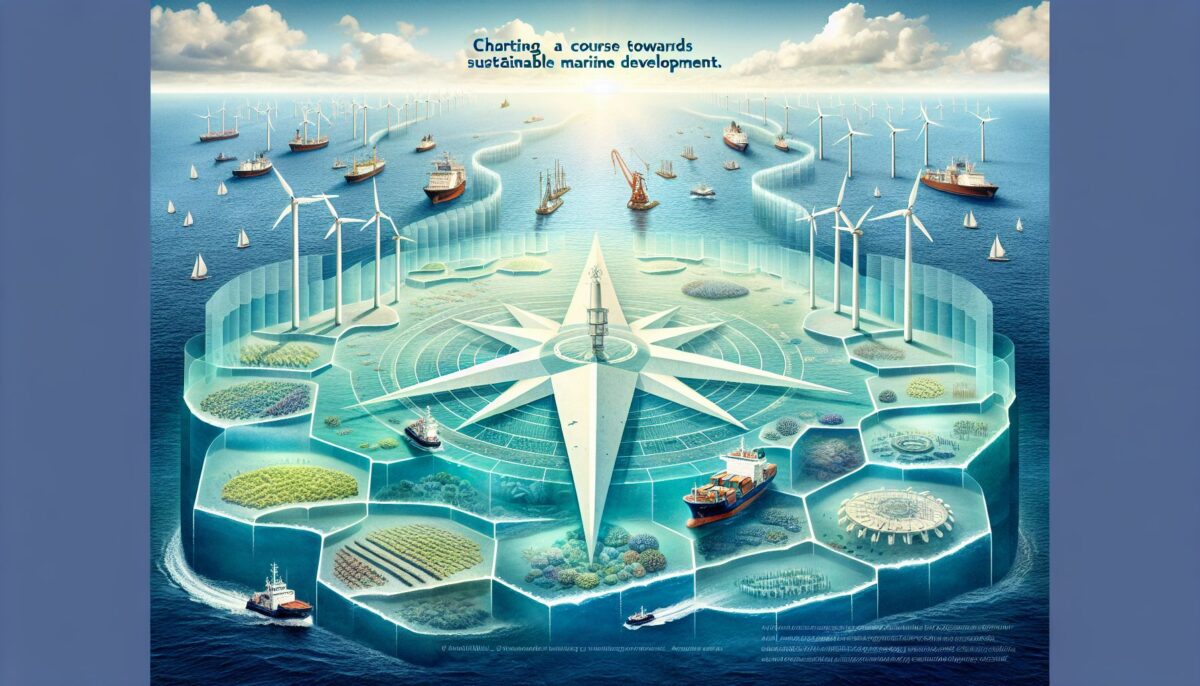The concept of Blue Economy is gaining significant traction around the globe and is seen as an exciting new frontier in sustainable development. It embraces the aim of maximising economic benefits from the oceans, seas, and coasts while preserving the health of oceanic ecosystems and marine biodiversity [1]. But what really is the Blue Economy, and why is it important? Let’s dive into the depths of this emerging concept and understand how it could potentially revolutionise maritime nations’ approach to ocean exploitation and conservation.
Understanding the Blue Economy
The Blue Economy concept focuses on sustainable economic development that leverages the untapped potential of ocean resources. This economy covers a wide array of sectors, including fisheries, aquaculture, marine tourism, offshore wind energy, desalination, maritime trade, shipping, and even new industries yet to be established [2]. A healthy Blue Economy is one where economic activity is in balance with the long-term capacity of ocean ecosystems to support this activity and remain resilient and healthy.
Potential and Challenges
Seas and oceans provide enormous economic benefits. They serve as highways for maritime trade, reservoirs for fisheries, aquaculture, and a host of other goods and services. However, threats such as overfishing, climate change, pollution, and habitat destruction are adversely impacting the overall health of our oceans and depleting marine biodiversity.
Strategies to Promote Blue Economy
The adoption and promotion of the Blue Economy require focused efforts at various levels.
1. Policy and Regulation
The first element is the establishment of supportive policies and regulatory frameworks. These should promote sustainable practices in the maritime sector and enforce strict regulations to combat illegal activities and environmental harms.
2. Innovation and Technology
Innovation is an essential driver of the Blue Economy. Technologies such as artificial intelligence, robotics, and biotechnology can unlock new potential in traditional industries like fishing and shipping while giving rise to emerging sectors like ocean energy, seabed mining, and marine biotechnology.
3. Financing and Investment
Investment in sustainable infrastructure and businesses can catalyze the transition towards a resilient Blue Economy.
4. Skills and Capacity Building
Building a skilled workforce can empower the maritime sector to embrace sustainable practices and technology.
Examples of Blue Economy
1. Sustainable Fisheries and Aquaculture
Sustainable fisheries and aquaculture are leading sectors in the Blue Economy. As per the World Bank, fisheries and aquaculture contribute to the livelihood of around 800 million individuals globally.
2. Clean Energy from Sea
The ocean’s renewable energy potential remains largely untapped. Wave and tidal energy can be a game-changer for oceanic island nations and coastal regions.
Looking Forward
Understanding and integrating the Blue Economy’s principles into national agendas could revolutionise how we view our oceans — not as expanses to exploit but as precious resources to be used judiciously. As research and understanding of our oceans continue to broaden, the possibilities for the Blue Economy will only continue to expand.
Investing in the Blue Economy is not just good economics; it’s a strategic imperative for a sustainable, inclusive, and resilient future.
As we sail forward, we need to harness the ‘blue’ in our economics, ensuring that the oceans’ wealth does not compromise their health. Because, in the end, the most important question we must ask is not “‘How much can we gain from the ocean?”, but rather “‘How much can we afford to lose?” [3].
Sources:
1. ScienceDirect: The Blue Economy and Small States
2. The World Bank: What is the Blue Economy?
3. Nature Conservancy: Investing in The Bold Blue Economy
